Whether you plan to live-line with spot or chum for cobia, you need to be able to set an anchor so it stays put. At least, that goes for anglers who don’t enjoy the option of hovering in place with Spot Lock or a similar virtual anchoring system. And if you spend enough time fishing you’ll see boats breaking free and drifting, you’ll see anglers burn up their fishing time trying to set an anchor in vein, and you’ll see boats get into rather scary predicaments when they wrap the anchor line around a prop or drift into a bridge piling.
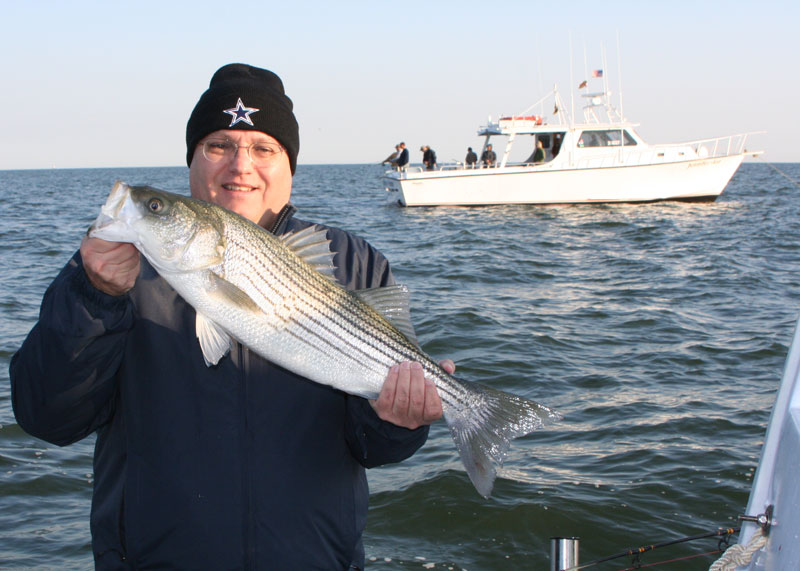
How to Choose the Best Anchor
Nine times out of 10, the root of the problem lies in the anchor and ground tackle that’s been chosen to do the job in the first place. Anchor types are, of course, a major factor. So let’s look at the most common ones in turn.
- Danforth – This type of common anchor has two flukes that pivot on a shaft. They’re very effective in mud, sand, and other soft bottom types. But on rock and packed shell, they tend to skip along without firmly digging in. On wrecks and reefs they may hold if the pointed flukes grab in a lucky spot, but quite commonly, they’ll also become snagged and may be irretrievable.
- Plow – Plow anchors look just like, well, a plow. They have similar performance characteristics to the Danforth and do best in relatively soft bottom types. They aren’t likely to hold on wreck or reef materials and again, if they do, they’ll often become permanent additions to the structure.
- Grappling – These anchors have multiple tines poking out; think of a giant treble hook but with four or five hooks. They tend to be completely ineffective on soft bottoms, but are often the best way to snag on a wreck or reef and work well on snaggy shell like oyster beds. Most are designed so the tines can be bent out by applying some extra pressure with the throttle of your boat, so they can be recovered after use.
- Mushroom – Mushroom anchors depend on their own weight and the suction of mud to hold, so they aren’t usually of much good for boats of any real size. A five or 10-pound mushroom works just fine for a Jon boat in a lake, however, and their easy to stow nature makes them a favorite for pond-hoppers, canoes, kayaks, and the like.
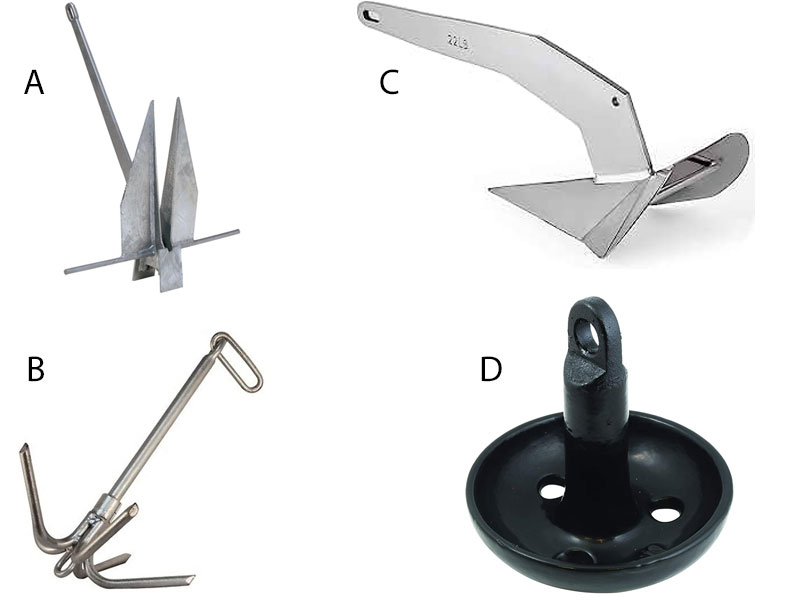
There are other types of anchors, but one of these will generally get the job done. That said, for many anglers, in order to anchor solidly on all the different types of bottom they may encounter carrying two anchors is in order: a plow or Danforth for soft bottom, and a grappling anchor for holding tight on structure. And, of course, you’ll need to make sure each anchor is sized properly for the boat you intend to use it with. Fortunately, this minor detail is usually well-marked on the anchor itself or is on a label when you see the anchor in the store.
Even with the proper type and size of anchor, having the appropriate ground tackle is also a must. Rope alone rarely does the trick, and having a sufficient length of chain between the rope and the anchor is imperative. Just what is that length? It depends on the size of your boat and the depth of the water you usually anchor in, but you’ll want to use at least 10 feet of chain, having the same length of chain as your boat’s LOA is good, and as a rule of thumb more will always increase the holding power.
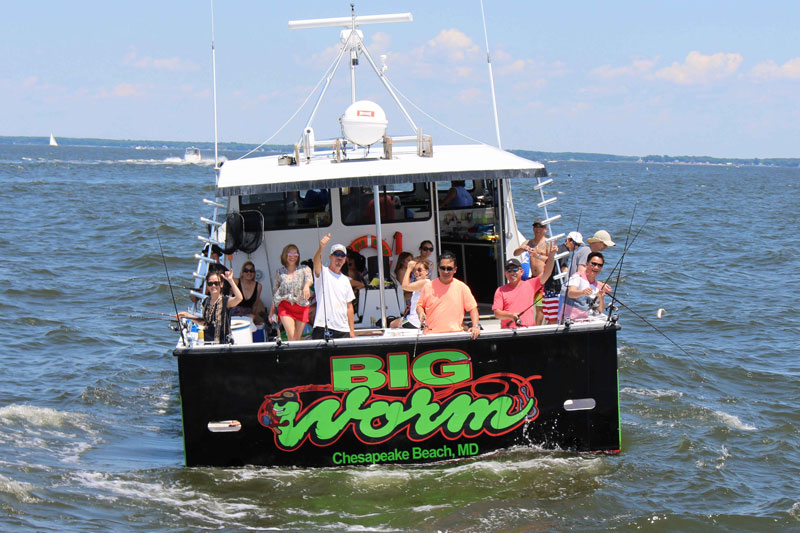
Setting a Boat Anchor
Okay: you have the right gear any you’re ready to anchor? Look at the depth finder and see how deep the water is, so you know how much scope (extra line) to let out after the anchor hits bottom. At a bare minimum in calm water a 3:1 ratio to the water depth is usually sufficient. If the water is 20’ deep, for example, let out at least 60 feet of line. If there’s any real wind, current, or waves, a scope of 5:1 is probably going to be necessary and in rough conditions, a 7:1 scope should be considered minimal. A storm is raging? I that case you’ll want to let out every last foot of scope available.
Once the line is out you may need to give the boat a bump in reverse if the current or winds are light, to bring the line tight. Then give a short bump in reverse to put full tension on the line and make sure the anchor’s holding. Next, sit there and wait. Watch a landmark for a minute or two to be 100-percent sure the anchor’s holding and your boat isn’t moving. You can also drop a fishing line to the bottom and watch to make sure its angle remains the same, or grab the anchor line and feel for erratic bumps and jumps that indicate the anchor is bouncing over the bottom. But don’t stare at your GPS to see if you’re moving, because the boat will swing back and forth and it will almost always read some level of speed.
After You Anchor a Boat
Your own situational awareness is just as important as everything we’ve discussed here when you anchor a boat. Becoming focused on baiting hooks, tying knots, or staring at a rod tip watching for nibbles often distracts an otherwise competent captain and as a result, he or she may not immediately notice that the anchor is dragging or has broken free. Then, it becomes a mad scramble to haul that thing up and get the engine started before something bad happens.
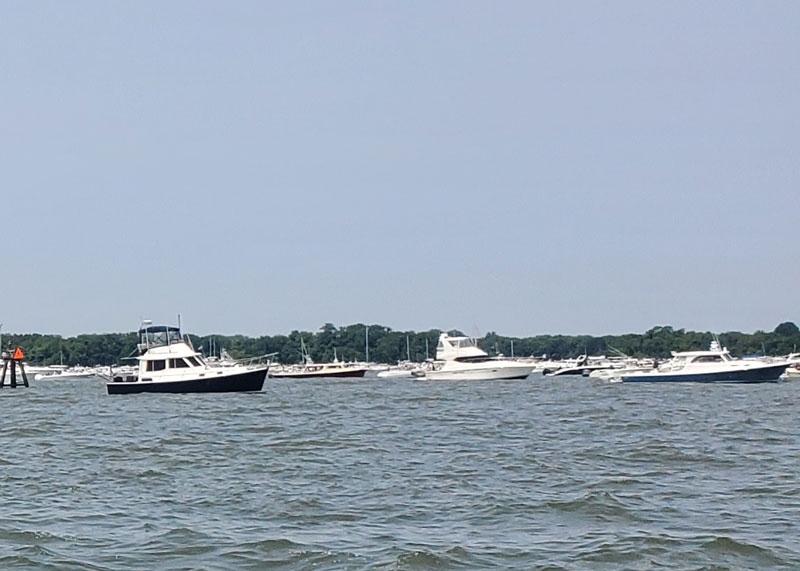
If your boat does break free and you have to start all over again, assess the situation and what went wrong. Was a Danforth bouncing along a hard bottom? In that case, switching to the grappling anchor might do the trick. Was a plow plowing through deep mud? Extra scope will probably help. Consider what happened, the conditions, the bottom composition, and then try again.
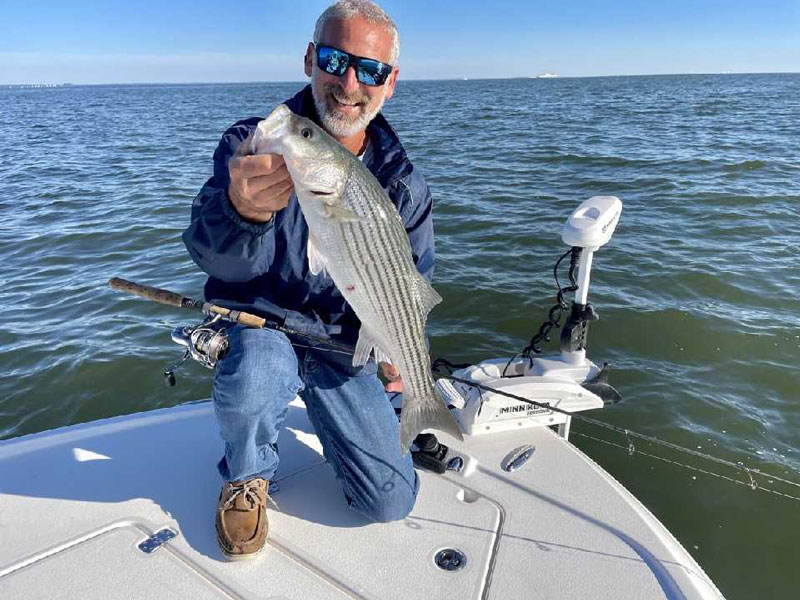
Or, you could always get one of those virtual anchoring systems.